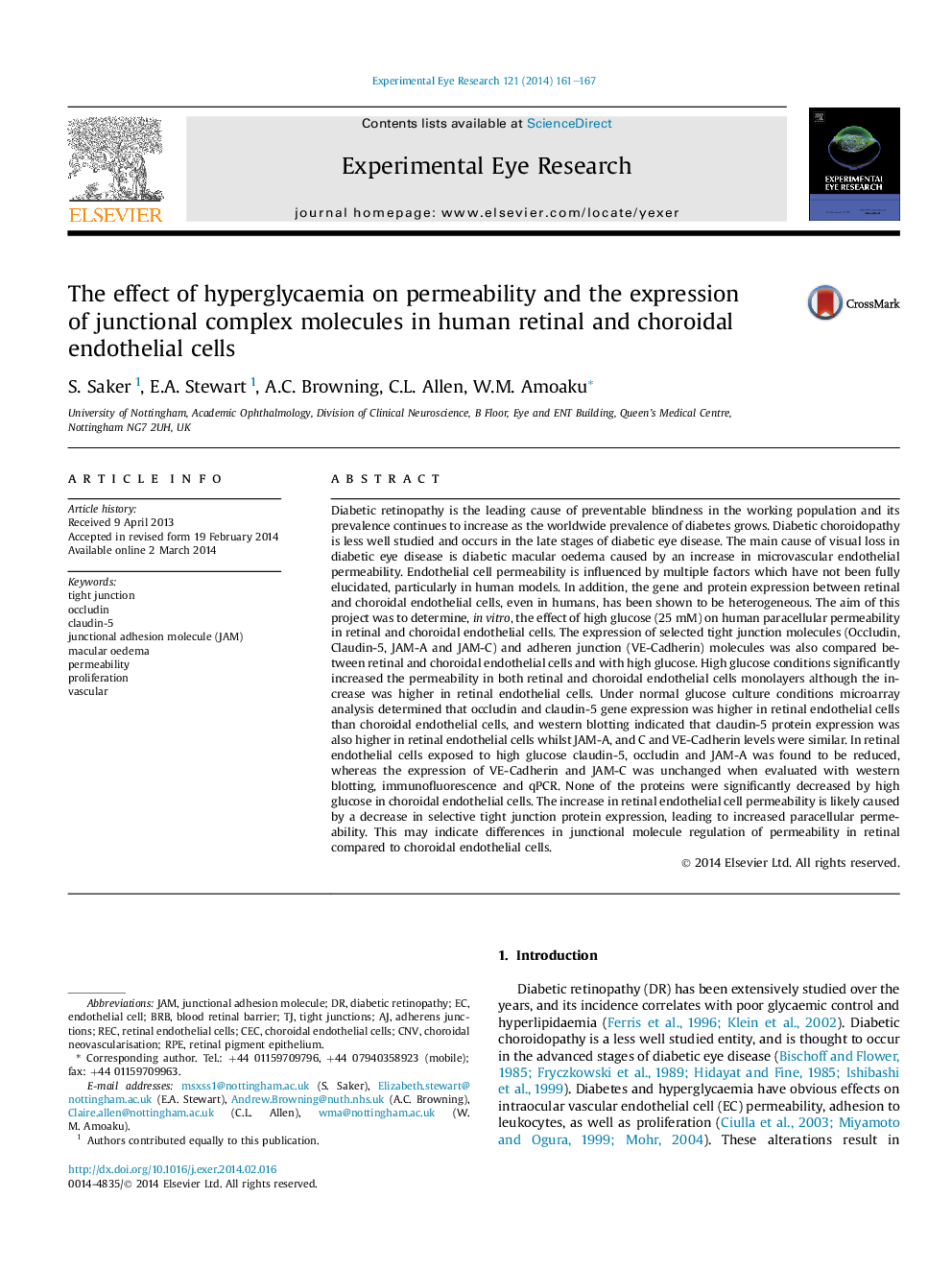| کد مقاله | کد نشریه | سال انتشار | مقاله انگلیسی | نسخه تمام متن |
|---|---|---|---|---|
| 6197041 | 1602601 | 2014 | 7 صفحه PDF | دانلود رایگان |
- Diabetic retinopathy causes most blindness in the working population.
- Visual loss is caused by fluid (oedema) due to increased endothelial permeability.
- We show hyperglycaemia increases human ocular endothelial permeability in vitro.
- Retina and choroid express different levels of some junctional molecules.
- Hyperglycaemia reduced junctional molecule expression in retina but not choroid.
Diabetic retinopathy is the leading cause of preventable blindness in the working population and its prevalence continues to increase as the worldwide prevalence of diabetes grows. Diabetic choroidopathy is less well studied and occurs in the late stages of diabetic eye disease. The main cause of visual loss in diabetic eye disease is diabetic macular oedema caused by an increase in microvascular endothelial permeability. Endothelial cell permeability is influenced by multiple factors which have not been fully elucidated, particularly in human models. In addition, the gene and protein expression between retinal and choroidal endothelial cells, even in humans, has been shown to be heterogeneous. The aim of this project was to determine, in vitro, the effect of high glucose (25 mM) on human paracellular permeability in retinal and choroidal endothelial cells. The expression of selected tight junction molecules (Occludin, Claudin-5, JAM-A and JAM-C) and adheren junction (VE-Cadherin) molecules was also compared between retinal and choroidal endothelial cells and with high glucose. High glucose conditions significantly increased the permeability in both retinal and choroidal endothelial cells monolayers although the increase was higher in retinal endothelial cells. Under normal glucose culture conditions microarray analysis determined that occludin and claudin-5 gene expression was higher in retinal endothelial cells than choroidal endothelial cells, and western blotting indicated that claudin-5 protein expression was also higher in retinal endothelial cells whilst JAM-A, and C and VE-Cadherin levels were similar. In retinal endothelial cells exposed to high glucose claudin-5, occludin and JAM-A was found to be reduced, whereas the expression of VE-Cadherin and JAM-C was unchanged when evaluated with western blotting, immunofluorescence and qPCR. None of the proteins were significantly decreased by high glucose in choroidal endothelial cells. The increase in retinal endothelial cell permeability is likely caused by a decrease in selective tight junction protein expression, leading to increased paracellular permeability. This may indicate differences in junctional molecule regulation of permeability in retinal compared to choroidal endothelial cells.
Journal: Experimental Eye Research - Volume 121, April 2014, Pages 161-167
